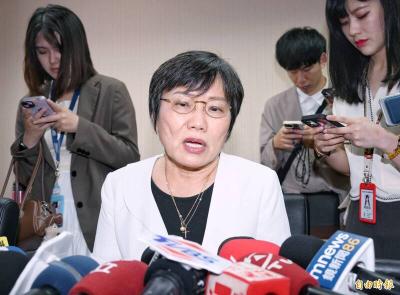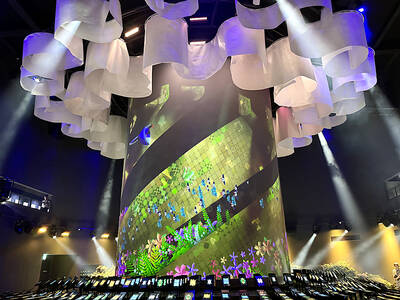A 16-year-old Taipei schoolgirl surnamed Chen has little time for the searing anti-Japanese rhetoric commonly heard across the Taiwan Strait in China.
"Japanese things are cool," the teenager said, smiling pertly amid the glitter of a Japanese inspired photography shop in Taipei's trendy Ximending entertainment area. "Japanese fashion, Japanese music, they're all really neat."
Chen's enthusiasm is emblematic of the pro-Japanese sentiments in this country, and differ sharply from the prevailing mood in China.
Despite 50 years of often brutal Japanese colonial rule from 1895 to 1945 and a clear understanding of Japanese atrocities during World War II, many Taiwanese see Japan as a source of political and cultural inspiration.
In China, many believe Japan has failed to adequately atone for its colonial-era aggression against its Asian neighbors -- especially China itself.
Japanese leaders are routinely caricatured in the Chinese press with unflattering buckteeth and Hirohito-style metal-rimmed glasses, and Chinese broadcasts are rife with portrayals of rapacious Japanese soldiers despoiling the pristine Chinese countryside.
Just last Sunday Chinese Foreign Ministry spokesman Kong Quan (孔泉) accused Japan's foreign minister of glorifying aggression after he said Tokyo's 50-year colonial rule over Taiwan was responsible for the high education standards there.
Amid tension on this and the war aggression issue, foreign ministry officials from Japan and China were due to hold talks yesterday and today in Japan.
Huang Fu-san (黃富三), a historian at Taiwan's Academia Sinica, ascribes the differing attitudes toward Japan among Taiwanese and Chinese to their differing experiences under Japanese rule.
In China, he says, World War II Japanese forces engaged in widespread brutality, while in Taiwan, Japan's colonial administration brought stable government, rapid economic development and excellent educational opportunities.
"The Japanese operated quite effectively here," he says. "Taiwan had the highest primary school enrollment rate anywhere in Asia outside of Japan itself."
Wu Zhiou-feng, 77, remembers the Japanese colonial period with great fondness.
"Things were good then," he said. "The political situation was settled and while things were tough economically we always got along."
Wu and many other Taiwanese of his generation favorably contrast the Japanese colonialists to the Chinese Nationalist Party (KMT), who arrived in Taiwan from China in 1945.
But right from the start many Taiwanese disliked their new masters, regarding them as corrupt, overbearing and uncultured.
"Soldiers took many things from us," Wu said. "Including our young women."
In early 1947, riots broke out after soldiers beat an elderly Taiwanese woman for illegally selling cigarettes near Taipei's main railway station.
Fearing a loss of control, KMT dictator Chiang Kai-shek (
Huang sees the 1947 events as a turning point in modern Taiwanese history.
"It drew a clear wedge between the Nationalists and the local Taiwanese, and deepened our appreciation of Japanese rule," he said.
In Ximending, shops with Japanese names like Gaiku and Nanajyoutatsu sell imported Japanese goods including clothes, food and images of Hello Kitty.
Lin Jyun-ye, 31, who sells Japanese fish balls, says Japanese products are trendy for many of his customers.
"I don't know what it is, but the kids really like them," he says. "They buy whatever is sold."
Taiwan is home today to about 10,000 Japanese.

Chinese Nationalist Party (KMT) Chairman Eric Chu (朱立倫), spokeswoman Yang Chih-yu (楊智伃) and Legislator Hsieh Lung-chieh (謝龍介) would be summoned by police for questioning for leading an illegal assembly on Thursday evening last week, Minister of the Interior Liu Shyh-fang (劉世芳) said today. The three KMT officials led an assembly outside the Taipei City Prosecutors’ Office, a restricted area where public assembly is not allowed, protesting the questioning of several KMT staff and searches of KMT headquarters and offices in a recall petition forgery case. Chu, Yang and Hsieh are all suspected of contravening the Assembly and Parade Act (集會遊行法) by holding

PRAISE: Japanese visitor Takashi Kubota said the Taiwanese temple architecture images showcased in the AI Art Gallery were the most impressive displays he saw Taiwan does not have an official pavilion at the World Expo in Osaka, Japan, because of its diplomatic predicament, but the government-backed Tech World pavilion is drawing interest with its unique recreations of works by Taiwanese artists. The pavilion features an artificial intelligence (AI)-based art gallery showcasing works of famous Taiwanese artists from the Japanese colonial period using innovative technologies. Among its main simulated displays are Eastern gouache paintings by Chen Chin (陳進), Lin Yu-shan (林玉山) and Kuo Hsueh-hu (郭雪湖), who were the three young Taiwanese painters selected for the East Asian Painting exhibition in 1927. Gouache is a water-based

Taiwan would welcome the return of Honduras as a diplomatic ally if its next president decides to make such a move, Minister of Foreign Affairs Lin Chia-lung (林佳龍) said yesterday. “Of course, we would welcome Honduras if they want to restore diplomatic ties with Taiwan after their elections,” Lin said at a meeting of the legislature’s Foreign Affairs and National Defense Committee, when asked to comment on statements made by two of the three Honduran presidential candidates during the presidential campaign in the Central American country. Taiwan is paying close attention to the region as a whole in the wake of a

OFF-TARGET: More than 30,000 participants were expected to take part in the Games next month, but only 6,550 foreign and 19,400 Taiwanese athletes have registered Taipei city councilors yesterday blasted the organizers of next month’s World Masters Games over sudden timetable and venue changes, which they said have caused thousands of participants to back out of the international sporting event, among other organizational issues. They also cited visa delays and political interference by China as reasons many foreign athletes are requesting refunds for the event, to be held from May 17 to 30. Jointly organized by the Taipei and New Taipei City governments, the games have been rocked by numerous controversies since preparations began in 2020. Taipei City Councilor Lin Yen-feng (林延鳳) said yesterday that new measures by